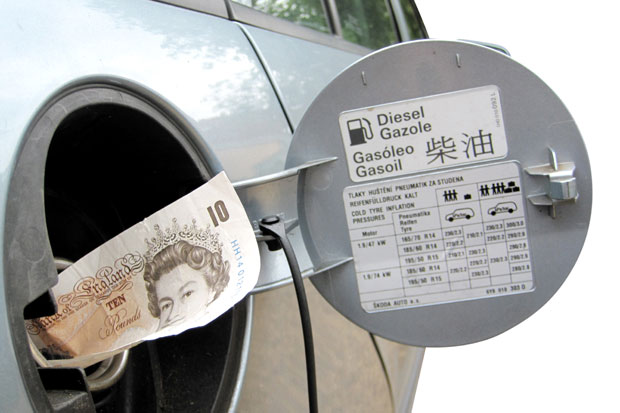30 May 2018
Fuel prices reach three-and-a-half-year high and fleets told worst still to come as they are hit by a double whammy
Petrol and diesel pump prices have hit a three-and-half year high and with the price of oil rocketing fleet operators have been told that the return of fuel costing more than 140p a litre could be in the pipeline

According to government figures, this week the average price of a litre of unleaded petrol reached 125.9p, up 1.6p on last week, while diesel was even higher at 130p, 1.8p up on the previous week. The RAC’s two-week price prediction, however, has unleaded increasing to 128.5p and diesel to 131.5p.
What’s more rising fuel costs has led to mobility data analysis company TMC (The Miles Consultancy) warning of a ‘fuel cost double whammy’ for fleets as petrol-engined cars gain popularity over diesel models among some organisations.
The fuel price hikes have been driven by the rapidly rising cost of oil which hit $80 a barrel in May, the first time that price has been reached since mid-November 2014.
Furthermore, the RAC is warning that even more rises could be on the horizon, which would send fleet fuel bills soaring, as one oil chief has speculated that the barrel price could rise to $100 again - a price last seen in August 2014.
If that was to happen pump prices could get close to the record levels seen in April 2012 when an average litre of unleaded was 142.48p and diesel was 147.93p, according to the motoring organisation.
Should oil hit $100 a barrel, with the pound staying at its current low level against the dollar of $1.35, unleaded petrol could be sold for an average of 141p a litre and diesel for 144p, speculated the RAC.
That would make it £8 more expensive to fill up a 55-litre family car with petrol or diesel (petrol - £69.64 to £77.55; diesel - £71.18 to £79.20) - £22 a tank more expensive for unleaded than in early 2016 and nearly £24 dearer for diesel.
TMC managing director Paul Hollick, said: “The trend away from diesel in favour of thirstier petrol cars could not be happening at a worse time. Analysis of ‘real-world’ fuel costs from TMC’s fuel and mileage capture recently showed that the real cost gap between diesel and petrol is much wider than many people realise.”
TMC analysed real-world fuel consumption data for 7,000 fleet cars last autumn. The results showed that the diesels were on average 38% more efficient than petrol equivalents.
“Even allowing for the fact that petrol is still cheaper at the pumps, our data showed that diesel drivers spent 30% less per mile on fuel than drivers of petrol versions of the same cars. Diesels also retained their cost advantage for the employer over petrol in nearly every case when benefit-in-kind tax and National Insurance contributions are factored-in, despite the 4% benefit-in-kind surcharge,” said Mr Hollick.
When UK fuel prices were last on a similar upwards trajectory in the three years to 2014, fleets’ shift to diesel was in full swing and businesses saw a steady improvement in MPG to offset the impact of the high oil price.
But, said Mr Hollick: “It’s a very different picture today, with worsening new-car MPGs magnifying the effect of increasing oil and road fuel prices. We urge fleets and drivers to look carefully at the cost implications of their fuel choices. It’s understandable that business drivers want to choose petrol in the present climate of opinion but the real-world costs of their choice may come as a shock to them and their company.”
RAC fuel spokesman Simon Williams said: “Fuel prices are now at their highest since mid-October 2014 which means we are paying 25p more a litre than we were at the start of 2016 when oil crashed to $26 a barrel and the average price of both fuels was around 101p.”
But, he continued: “The worst may be still yet to come. If the price of oil goes up towards $100 a barrel we will very likely see a return to the dark days of April 2012 when petrol and diesel hit record highs. Even though the oil price was higher then (around $120 a barrel) today’s weaker exchange rate will lead to similar prices at the pumps.
“The oil price has increased by $30 a barrel since last July as a result of OPEC (the Organisation of the Petroleum Exporting Countries) and Russia limiting production to reduce an oversupplied market. On top of this we now the United States’ decision to re-impose economic sanctions on Iran which is the third biggest oil producer in OPEC. This will tighten supply even further and cause the barrel price to go up even more. The oil glut that made fuel prices so low two to three years ago is fast becoming a distant memory and the bad times of the high pump prices of 2012 may unfortunately be returning.”


